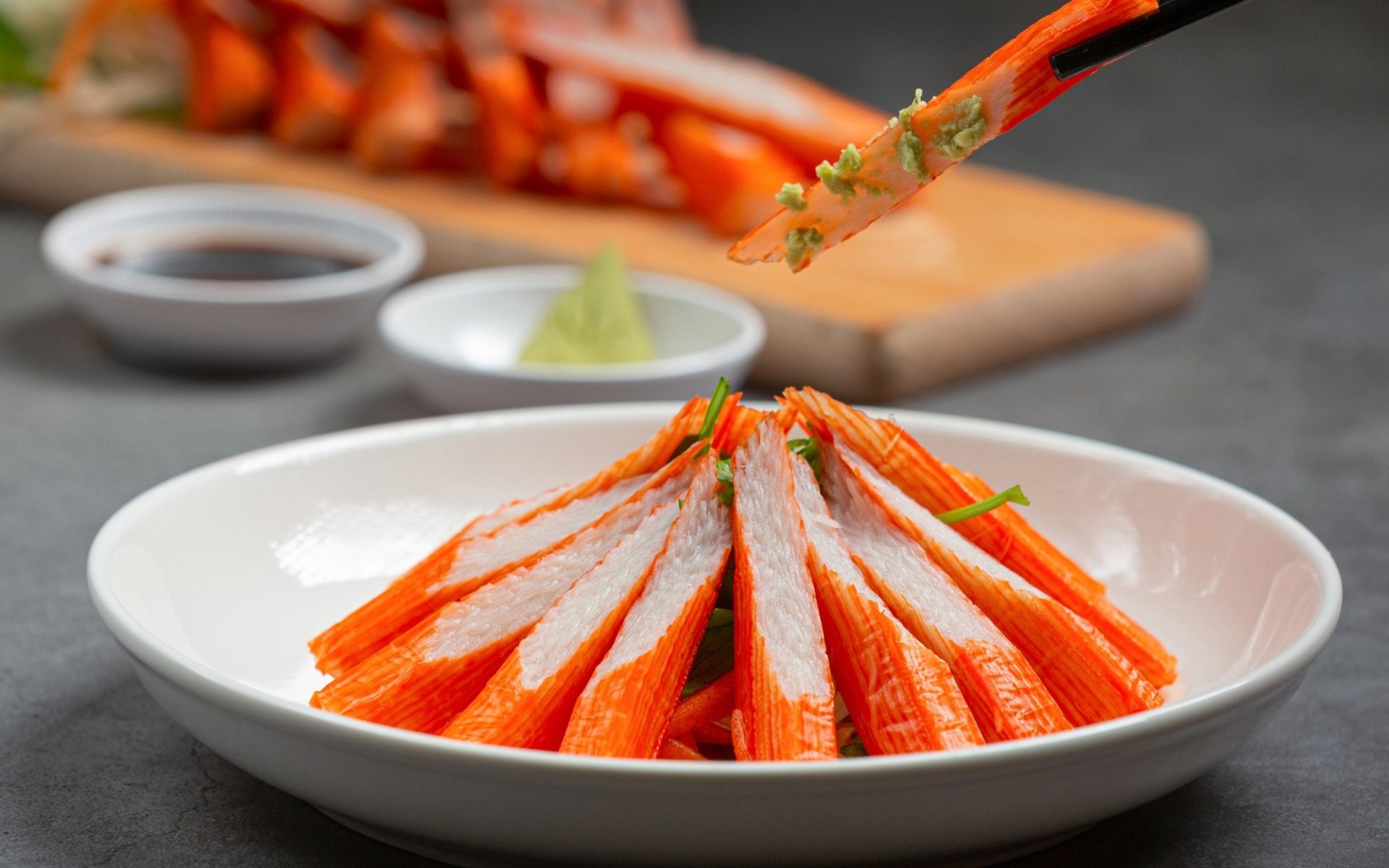Crab sticks

Many of you might be wondering, if crab sticks aren't made from crab meat, then what are they made from? Every time you enjoy delicious crab sticks, the taste doesn't quite resemble real crab meat, yet they're so tasty you can't stop eating them! The truth is, crab sticks are made from white fish, and their origin traces back to Japan. In Japan, this type of processed fish is called surimi.
The Genesis of Kanikama
The story of crab stick production goes back to the mid-20th century when a Japanese company in Hiroshima named Osaki Suisan developed a method to process surimi, or white fish like Threadfin Bream, Alaska Pollock, Seabass, Bigeye Snapper, and Ribbonfish, into imitation crab meat that closely resembled the texture and taste of real crab meat. This was done to imitate the meat of the Alaska King Crab, the largest crab in the world.
This concept arose because real crab meat was very expensive. Additionally, when fishermen caught fish, small white fish often got caught in the nets. However, these small fish didn't meet market standards and thus sold at a low price. This company then came up with the idea of making imitation crab meat, realizing that these small fish also had nutritional value. They ground the fish meat, mixed it with starch, and seasoned it to mimic the taste and smell of real crab meat. Then, they pressed it into sticks, colored them orange to resemble Alaska crab legs, and named them Kanikama (カニカマ), which means pressed crab in Japanese. In international markets, the official name used is Crab Sticks.
From Hiroshima to Global Popularity
The production of Kanikama was a breakthrough in the seafood industry because, prior to processing fish meat, crab meat was considered an expensive commodity not easily accessible. However, with the advent of Kanikama, consumers could enjoy the taste of crab meat at an affordable price.
Subsequently, the popularity of Kanikama spread and quickly became a staple food in Japan. It was also introduced to other regions in Asia, such as Korea, China, Taiwan, and even Thailand, where we refer to Kanikama as Poo-ad (ปูอัด).
Later, in 1980, Kanikama was exported to the United States and Europe, marketed as Crab Stick or Imitation Crab. Soon after entering these markets, Kanikama achieved immediate success, and since then, it has become a regular item in supermarkets and restaurants throughout Europe and America.
Culinary Uses and Nutritional Value of Crab Sticks
One of the reasons for Kanikama's success is its versatility in cooking. It can be eaten in various ways, such as with salads, sushi, sandwiches, fried, or even raw, dipped in wasabi and Japanese ponzu sauce, which is incredibly delicious! Because it's made from seasoned ground fish meat, steamed until cooked, and then frozen to preserve its quality, you can eat crab sticks immediately without any further cooking.
While many might feel that Kanikama is an artificial food that doesn't offer much benefit, it actually contains nutritional value derived from white fish. It has essential fatty acids like Omega-3, Vitamin B2 (which the body needs for metabolizing protein, fat, and carbohydrates), and Vitamin D (which bones need for calcium absorption). It also contains calcium, phosphorus, iron, zinc, iodine, and magnesium.
Comparing the nutritional value of Kanikama with Alaska King Crab shows that Kanikama has less fat, cholesterol, and salt than Alaska King Crab. The phosphorus content in Kanikama is comparable to Alaska King Crab. Although other nutritional values might be slightly lower, Kanikama is still considered a beneficial food because its main ingredient is white fish.
Ultimately, the history and origin of Kanikama prove that humans are always creative in creating new things to meet their needs. Even though it's not made from real crab meat, Kanikama has become a beloved seafood product for millions of people worldwide.
You can find Crab sticks (Poo-ad) or Kanikama (カニカマ) at all Rimping branches.


